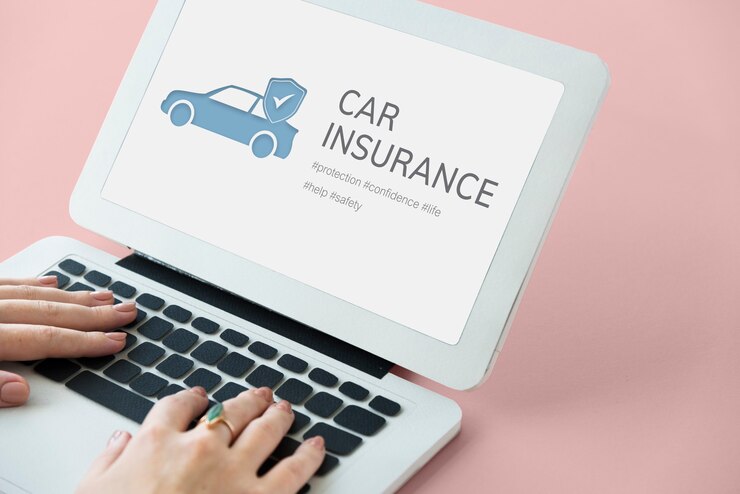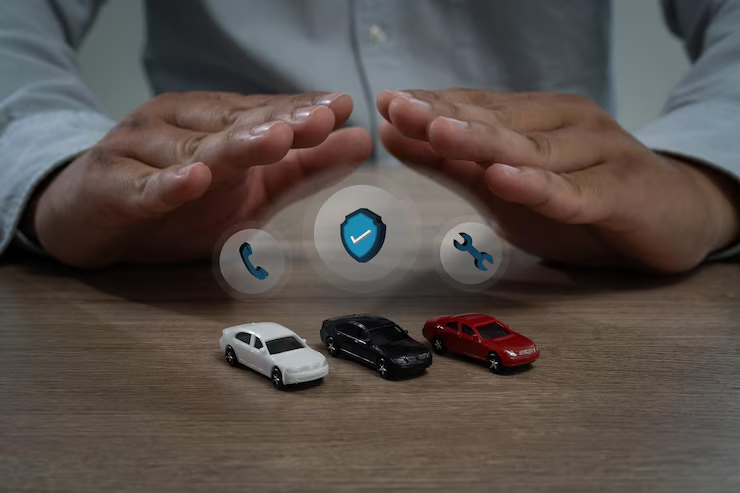Understanding Car Insurance: Finding The Best Coverage For Your Needs
Car insurance is a vital aspect of responsible vehicle ownership. It protects both you and others on the road in case of accidents, injuries, or damage. However, choosing the right car insurance coverage can be confusing, especially with all the options available. Understanding how car insurance works and what types of coverage you need will help you make the best decision.
This comprehensive guide will break down the key elements of car insurance, explain the types of coverage available, and offer tips on how to find the best insurance for your needs.
What Is Car Insurance?

Car insurance is a policy that provides financial protection in case of an accident, theft, or other incidents involving your vehicle. When you purchase car insurance, you pay a monthly or annual premium in exchange for the coverage provided by the policy.
Car insurance policies generally offer protection for the following:
- Damage to your vehicle: Whether from an accident or natural disaster.
- Damage to others’ vehicles: If you are at fault in an accident.
- Injuries to others: Medical expenses for those injured in an accident you caused.
- Injuries to yourself and passengers: If you or your passengers are injured in an accident.
Key Components of Car Insurance
To understand car insurance fully, you need to familiarize yourself with several important components of a typical policy. These include:
Premium
The premium is the amount you pay regularly (monthly, quarterly, or annually) for your car insurance. This is typically determined based on several factors, including:
- Your driving history: A clean driving record often leads to lower premiums.
- Your car’s make and model: Some cars are more expensive to insure due to their repair costs or likelihood of being stolen.
- Your location: Urban areas with more traffic and accidents tend to have higher premiums.
- Your age and gender: Younger drivers or male drivers may have higher premiums because they are statistically more likely to be involved in accidents.
Deductible
The deductible is the amount of money you will pay out of pocket before your insurance starts covering the costs. For example, if you have a $500 deductible and you incur $1,500 in damage, you will pay the first $500, and your insurance will cover the remaining $1,000. A higher deductible often results in a lower premium, but it also means you’ll pay more in the event of a claim.
Coverage Limits
Coverage limits are the maximum amounts your insurance will pay out for a covered claim. There are generally two types of limits:
- Per accident limits: The maximum amount the insurer will pay for damages in a single accident.
- Per person or per occurrence limits: The maximum amount the insurer will pay for individual injuries or damages within a policy period.
Choosing the right coverage limits is essential for adequate protection. Insuring your car for the minimum required by law may leave you underinsured if you’re involved in a major accident.
Policy Types

Car insurance policies can vary greatly in terms of coverage, and it’s important to understand the differences when choosing the right one. The most common types of car insurance are:
1. Liability Insurance
Liability insurance covers damage or injury caused to others in an accident you are at fault for. It typically includes:
- Bodily injury liability: Covers medical expenses for injuries caused to others.
- Property damage liability: Pays for repairs or replacement of others’ property, such as their car, fences, or buildings, if you are at fault.
Liability insurance is usually mandatory, and most states require drivers to carry a minimum amount of coverage. However, it may not be sufficient if you cause serious damage or injury.
2. Collision Coverage
Collision coverage pays for repairs to your own vehicle if you’re involved in an accident, regardless of fault. This can be helpful if your car is damaged, even if the other driver is uninsured or if you collide with an object like a tree or a guardrail.
3. Comprehensive Coverage
Comprehensive insurance covers non-collision incidents, such as theft, vandalism, natural disasters, and hitting an animal. This is especially important if you live in an area prone to natural disasters or car theft.
4. Uninsured/Underinsured Motorist Coverage
This coverage protects you if you’re involved in an accident with someone who either doesn’t have car insurance or doesn’t have enough coverage to pay for your expenses. It’s a valuable option, especially if you live in an area where uninsured drivers are common.
5. Personal Injury Protection (PIP)
PIP, or no-fault insurance, covers medical expenses for you and your passengers, regardless of who is at fault for the accident. It can also cover lost wages and other accident-related expenses.
6. Medical Payments Coverage
This type of coverage is similar to PIP but is typically more limited. It helps cover medical expenses for you and your passengers if you’re injured in an accident, regardless of fault.
7. Gap Insurance
If your car is totaled and you owe more on your loan or lease than the car is worth, gap insurance covers the difference. This can be particularly helpful for new car owners who have significant outstanding loans.
Optional Add-ons
Some car insurance policies offer additional coverage options to customize your plan. These can include:
- Roadside assistance: Provides services like towing, tire changes, and fuel delivery in case of a breakdown.
- Rental car coverage: Pays for the cost of renting a car if yours is being repaired after a covered incident.
- Custom parts and equipment coverage: Covers aftermarket parts or customizations made to your vehicle, such as custom wheels or a new stereo system.
How to Choose the Right Car Insurance

Choosing the right car insurance requires understanding your specific needs and the types of coverage available. Here are some steps to help guide your decision:
1. Assess Your Coverage Needs
The first step is to evaluate what coverage you truly need. Consider the following:
- Your car’s value: If you have an older car, you may not need comprehensive or collision coverage, as the cost of repairs may exceed the value of the car.
- Your driving habits: If you drive frequently or have a long commute, you may want to opt for higher coverage limits.
- Your financial situation: If you’re unable to afford a large deductible, look for a plan with a lower deductible.
- Your state’s requirements: Make sure you meet your state’s minimum liability insurance requirements. Some states require additional coverage for uninsured motorists, for example.
2. Shop Around and Compare Quotes
Different insurers offer different premiums, coverage options, and discounts. It’s important to get quotes from multiple companies to compare pricing and services. Some insurers may offer discounts for good driving habits, bundling multiple policies, or having safety features in your car.
3. Check for Discounts
Many car insurance providers offer discounts that can help reduce your premium. These may include:
- Good driver discounts: For drivers with a clean driving record.
- Multi-policy discounts: If you bundle car insurance with home or renters insurance.
- Low-mileage discounts: For drivers who don’t use their car often.
- Safety features discounts: If your car is equipped with features like airbags, anti-theft devices, or anti-lock brakes.
4. Read the Policy Details
Before committing to any policy, read the fine print. Ensure you fully understand the coverage limits, exclusions, and terms of the policy. Pay close attention to any deductibles, co-pays, or out-of-pocket costs.
5. Consider Customer Service and Claims Reputation
While price is important, customer service and the insurer’s claims process should also be a priority. Research customer reviews and satisfaction ratings, and find out how easy it is to file a claim and get the support you need in case of an accident.
6. Review Your Policy Regularly
Your car insurance needs may change over time. Be sure to review your policy regularly and adjust your coverage as necessary. For example, if you pay off your car loan, you may no longer need gap insurance. Similarly, if you move to a new location, your premiums may change.
Also Read : Top 10 Insurance Policies Every Family Should Consider
Conclusion
Car insurance is a crucial part of vehicle ownership, protecting you and others from financial hardship in the event of an accident or loss. By understanding the different types of coverage available, assessing your needs, and comparing options, you can find the right policy that provides adequate protection without breaking the bank.
Remember to review your policy regularly, shop around for the best rates, and take advantage of discounts to ensure that you’re getting the best value for your money.
FAQs
What is the minimum car insurance required by law?
The minimum car insurance required by law varies by state, but it typically includes liability insurance for bodily injury and property damage. Some states also require personal injury protection (PIP) or uninsured/underinsured motorist coverage.
Should I get comprehensive coverage for my older car?
If your car is older and has a lower value, you may not need comprehensive or collision coverage, as the cost of repairs might exceed the value of the car. However, if you can afford the premium, it can still provide added peace of mind.
Can I switch car insurance providers anytime?
Yes, you can switch car insurance providers at any time. However, make sure you have new coverage in place before canceling your old policy to avoid a lapse in coverage.
How does my driving record affect my car insurance premium?
A clean driving record generally results in lower premiums, while a history of accidents or traffic violations may lead to higher rates. Many insurers offer discounts for drivers with a good driving record.
What is uninsured motorist coverage, and do I need it?
Uninsured motorist coverage protects you if you’re involved in an accident with a driver who doesn’t have insurance or doesn’t have enough insurance to cover your expenses. It’s highly recommended, especially in areas with a high number of uninsured drivers.







